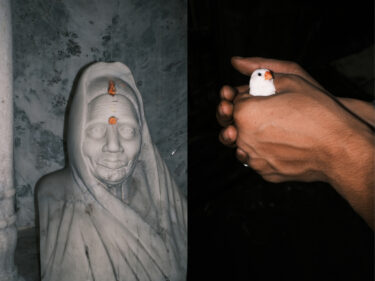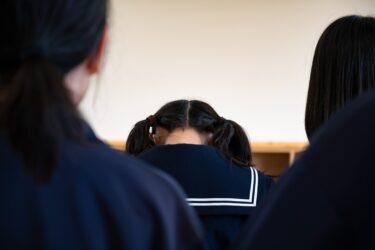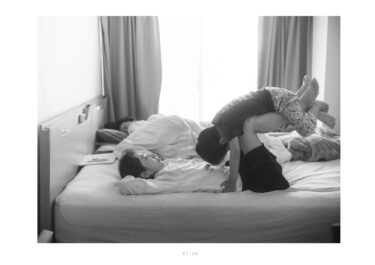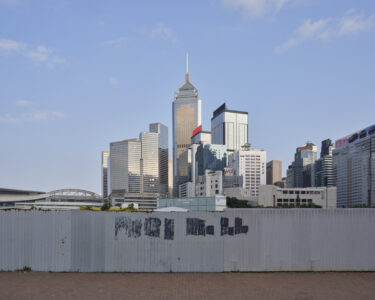A09
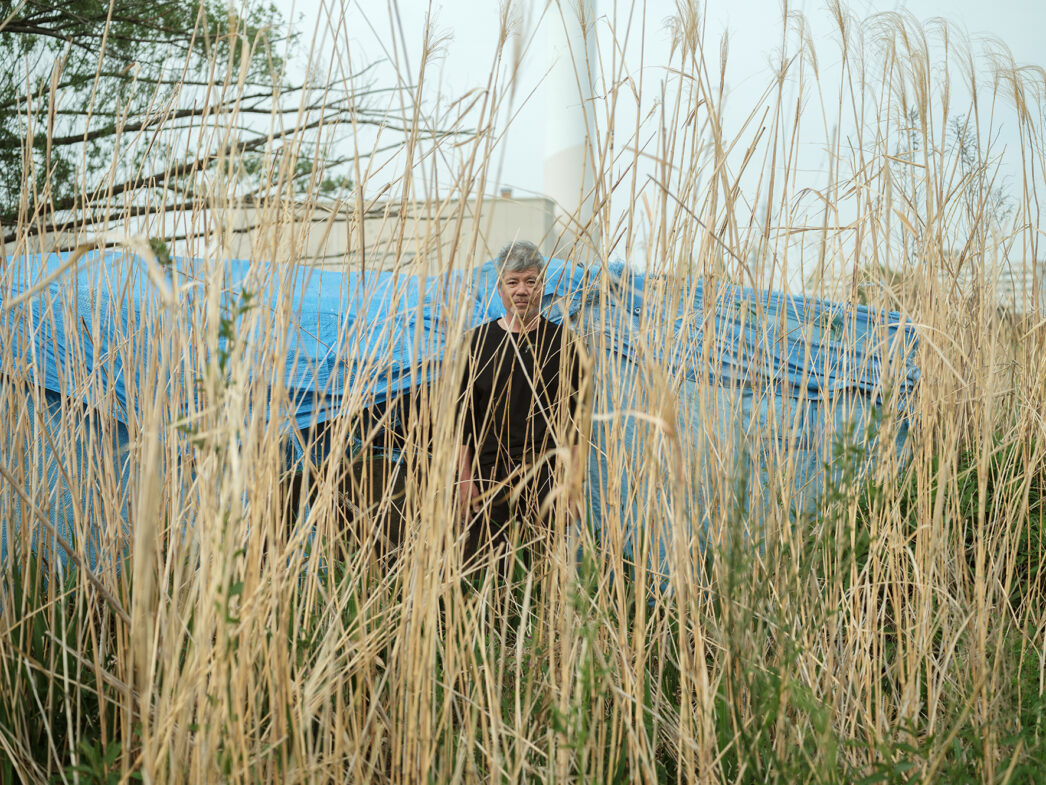
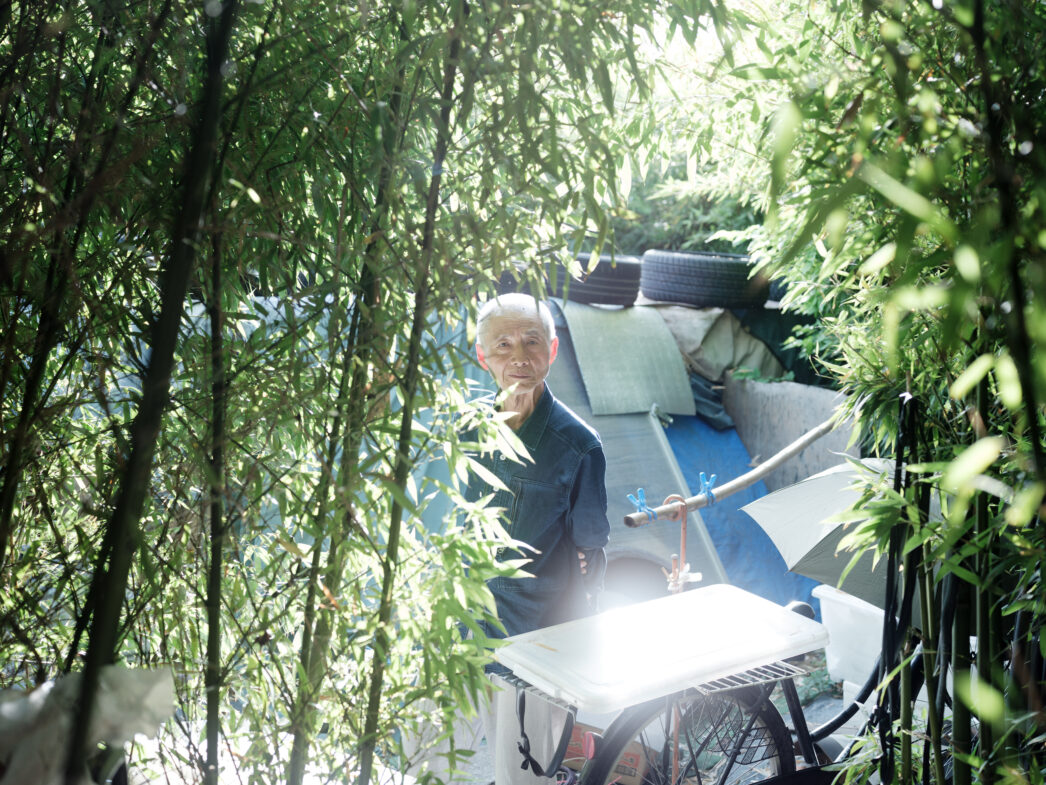
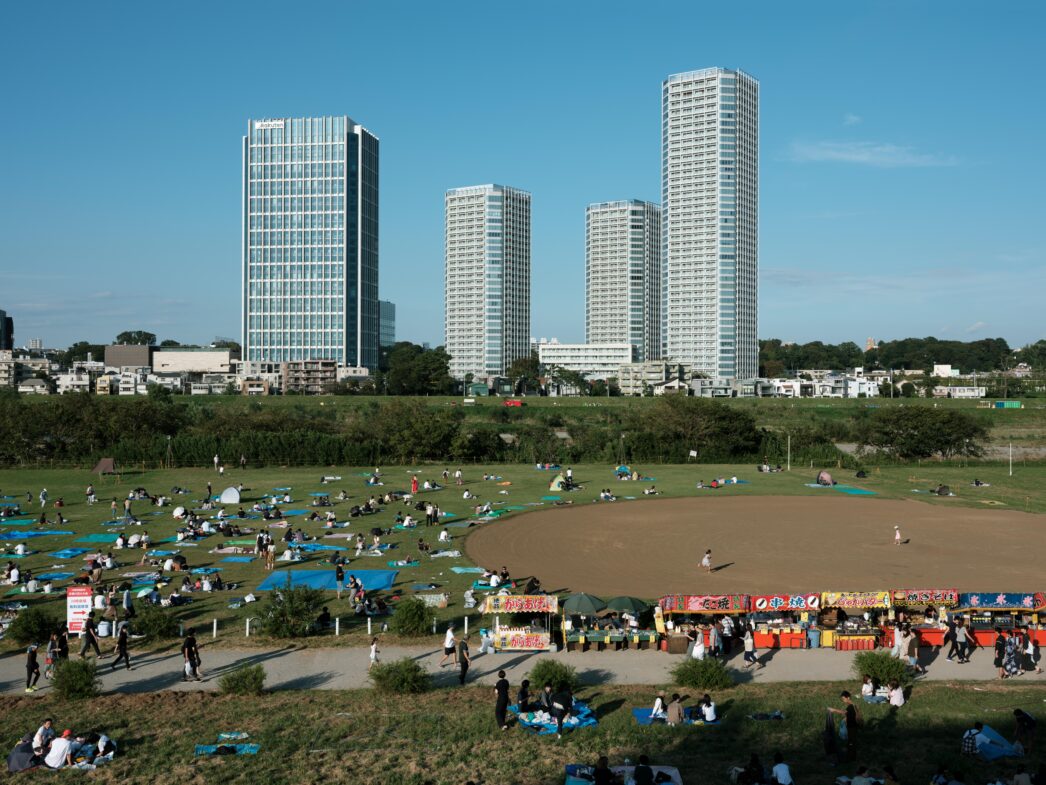
時津 剛
Takeshi Tokitsu
BEHIND THE BLUE
Gentrification, the loss of inclusiveness and diversity in a city due to soaring land prices, is a problem common to mature metropolises, and Tokyo is no exception. Since the 2000s, triggered by the Urban Renewal Special Measures Act, which relaxed building standards, Tokyo has seen a rush of large-scale urban development projects, and the surface of the city continues to undergo major transformation.
Walking through the city, one notices ‘exclusion’ in the form of fences and doors placed in the gaps between pedestrian bridges and buildings, benches with armrests to prevent people from lying down, and strange objects and protrusions called ‘exclusion art.’ Although there are few homeless people in central Tokyo these days, spaces where they can sit or sleep are disappearing, making them more and more “invisible.”
I walked along the Tamagawa River, which runs along the periphery of Tokyo. The blue sheets scattered along the river are makeshift dwellings built by homeless people. Ironically, these “invisible” people are made visible by the blue sheets that protect and hide their belongings. I’ve been living in Tokyo for more than 30 years. Recently, I have been feeling nostalgic for the openness, the ‘all kinds of stuff’ diversity that once marked the city. This project is my own theory of Tokyo, illuminated from the outskirts of the city.
Horikawa Oike Gallery
238-1, Oshiaburanokoji-cho, Nakagyo-ku, Kyoto
Subway Tozai Line "Nijojo-mae" station. 3 min on foot from exit 2
Open: 4.12 Sat.—5.11 Sun.
11:00—18:30 (最終入場|Last Entry 18:00)
Closed: Mon.
11:00 - 18:30
Free
Supported by 株式会社シグマ |Sigma Corporation




